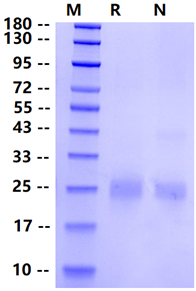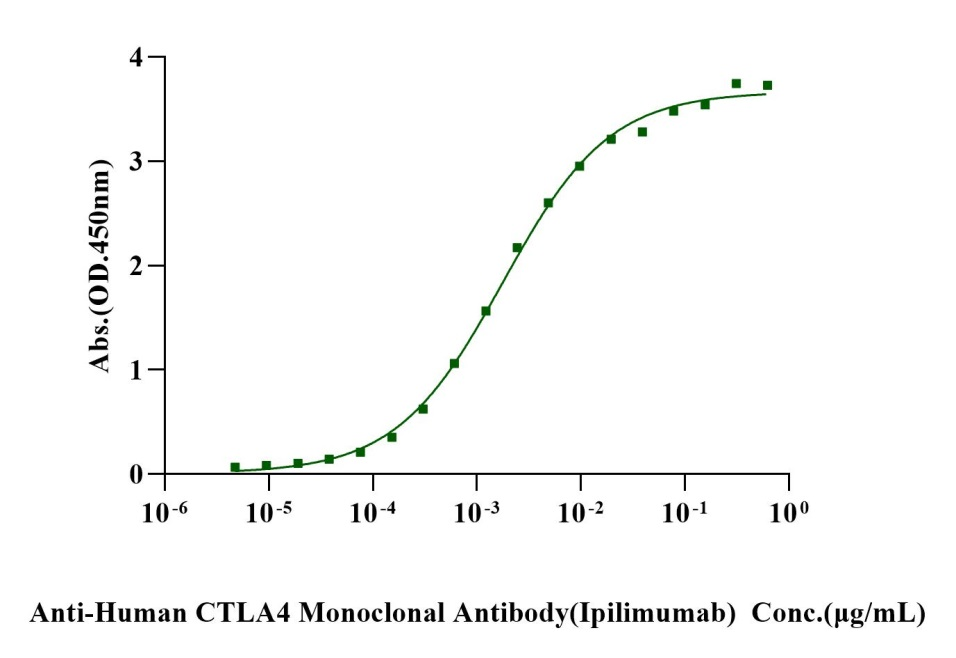Ala37 - Phe162, with C-terminal 8*His&Avi tag
AMHVAQPAVVLASSRGIASFVCEYASPGKATEVRVTVLRQADSQVTEVCAATYMMGNELTFLDDSICTGTSSGNQVNLTIQGLRAMDTGLYICKVELMYPPPYYLGIGNGTQIYVIDPEPCPDSDFGGGSHHHHHHHHGLNDIFEAQKIEWHE
20-27Reducing)
1.Shuang Qin, Linping Xu, Ming Yi, Shengnan Yu,Kongming Wu & Suxia Luo: Novel immune checkpoint targets: moving beyondPD-1 and CTLA-4: MolecularCancer volume 18, Article number: 155 (2019).
Cytotoxic T-lymphocyte-associated protein 4 (CTLA-4) is an inhibitory receptor belonging to the CD28 immunoglobulin subfamily, expressed primarily by T-cells. The family includes CD28, CTLA-4 and ICOS as well as other proteins including PD-1, BTLA and TIGIT.Its ligands, CD80 and CD86, are typically found on the surface of antigen-presenting cells and can either bind CD28 or CTLA-4, resulting in a costimulatory or a co-inhibitory response, respectively. Because of its dampening effect, CTLA-4 is a crucial regulator of T-cell homeostasis and self-tolerance. The mechanisms by which CTLA-4 exerts its inhibitory function can be categorized as either cell-intrinsic (affects the CTLA-4 expressing T-cell) or cell-extrinsic (affects secondary cells). CTLA-4 mainly acts in a cell-extrinsic manner via its competition with CD28, CTLA-4-mediated trans-endocytosis of CD80 and CD86, and its direct tolerogenic effects on the interacting cell.


Immobilized Biotinylated CTLA4 His&Avi Tag, Human (Cat. No. UA010483) at 2 μg/mL on Streptavidin precoated (0.5μg/well) plate, can bind Anti-Human CTLA4 Monoclonal Antibody (Ipilimumab) with EC50 of 1.56-2.03 ng/ml.